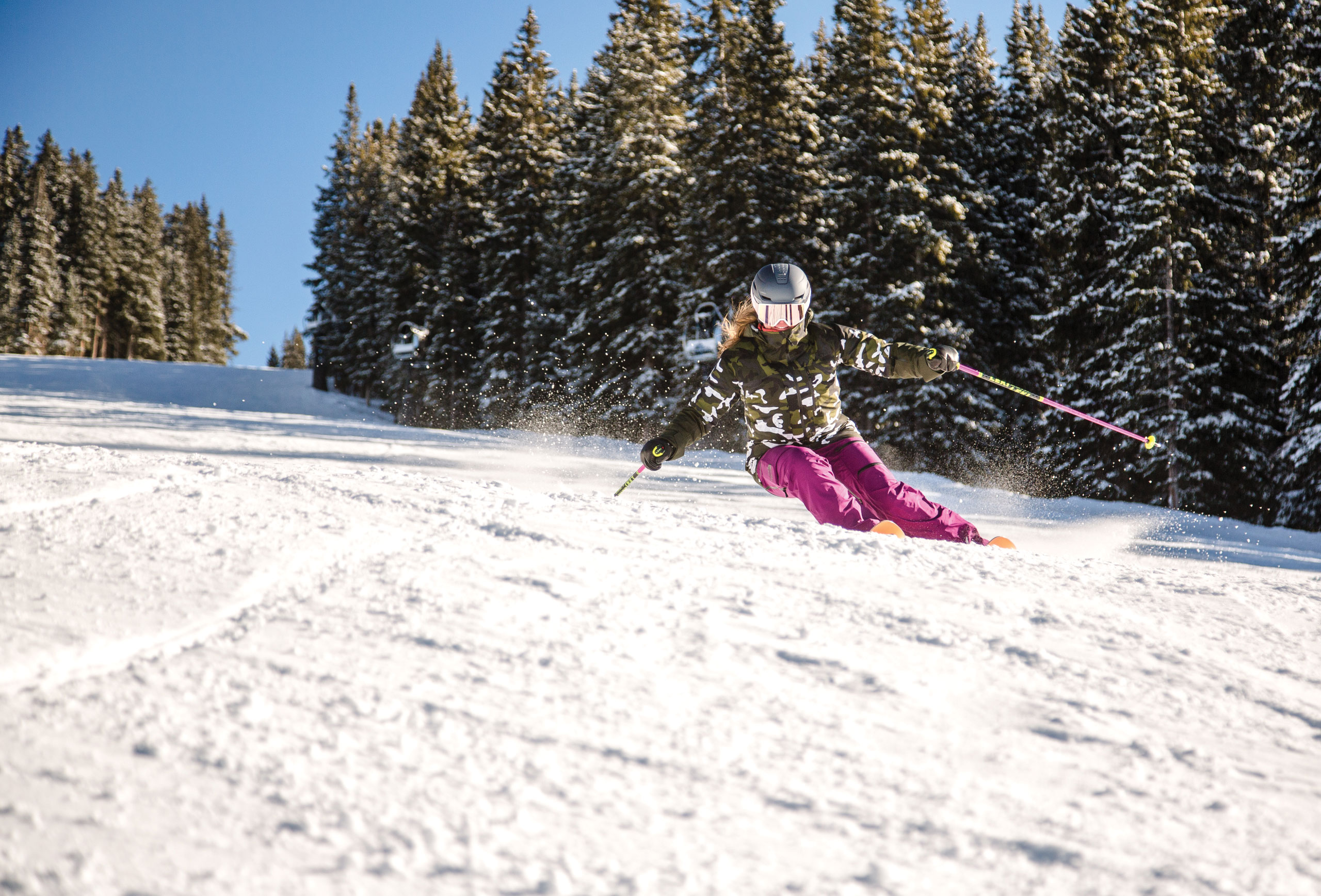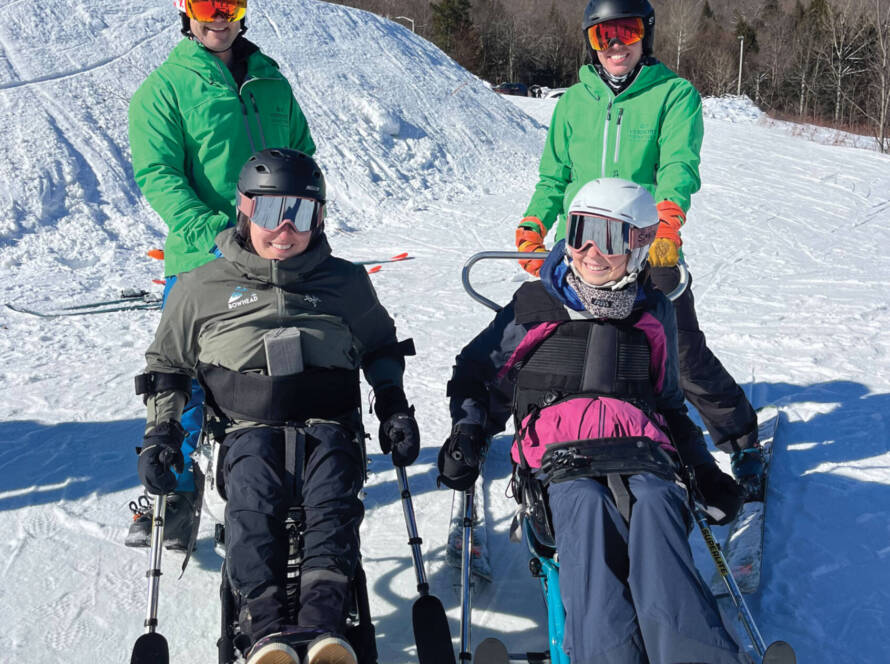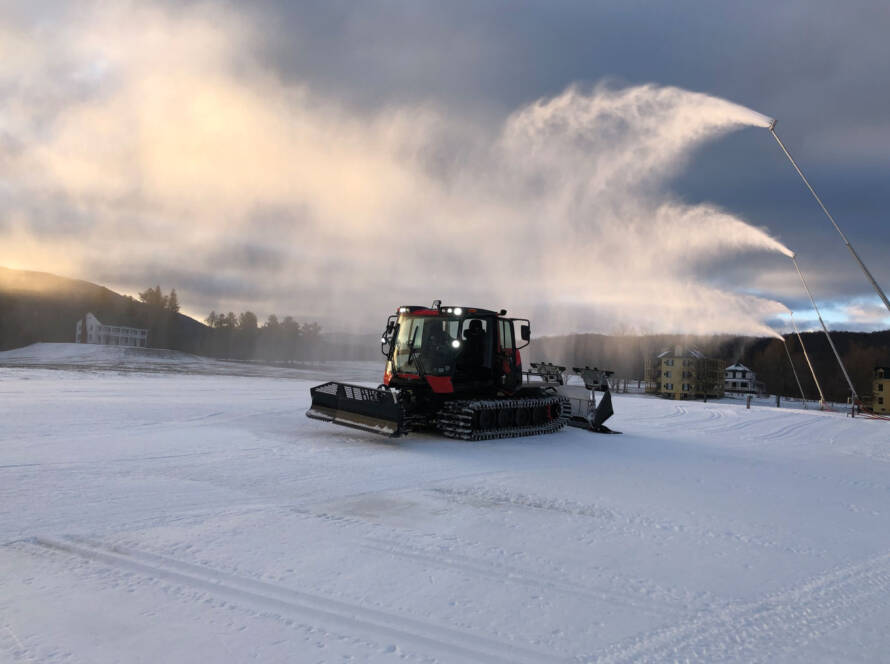For many people, snow sports like skiing and snowboarding top the list of favorite winter activities. When it comes to educational, competitive and leadership opportunities within these sports, however, a wide gender gap persists between men and women.
The Professional Ski Instructors of America and American Association of Snowboard Instructors (PSIA-AASI) is striving to change that. Boosting equity and the participation rate for women in snow sports is a primary goal of the PSIA-AASI’s Women’s Council on Equity and Inclusion (WCEI).
WCEI chair Maggie Loring says the proportion of females or people who identify as women in PSIA-AASI and across snow sports generally is only about 30%. She says that number gets smaller the higher up you go. “What happens is as you go up the ranks in level of certification and in leadership, that percentage drops precipitously,” said Loring. “Our mission is to try to change that demographic.”
PSIA-AASI is one of the world’s largest organizations dedicated to teaching people how to ski and snowboard. The non-profit association based in Lakewood, Colo., develops education materials and establishes certification standards for instructors in snowboarding, telemark skiing and adaptive snow sports.
The WCEI works to develop strategies and best practices for PSIA-AASI members so they can advance educational and professional development opportunities for women in snow sports as well as increase female representation at all leadership levels.
“We are 50% of the population, so we ought to be represented equally,” said Loring, adding female participants in snow sports frequently face barriers that not only prevent them from achieving their true potential, but can also lead them to drop out. “We want everyone to have the same resources and opportunities, but we recognize there are specific challenges and different circumstances for women as they’re trying to move up through the ranks.”
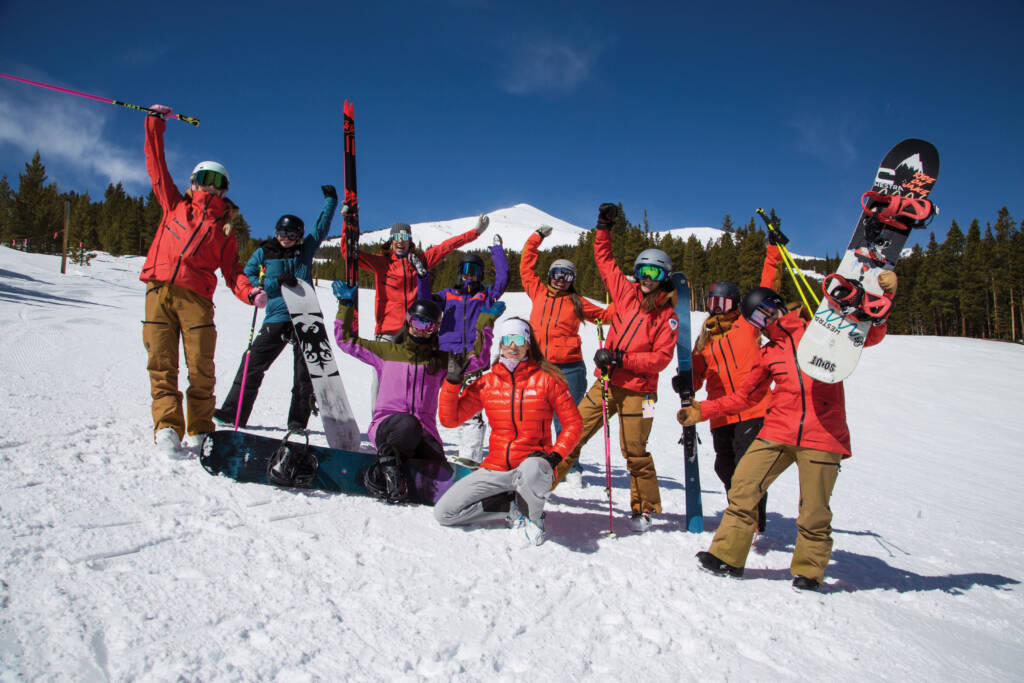
According to Loring, some resources don’t work as well for women and obstacles that arise as one progresses in snow sports are frequently less negotiable for women as well.
An example of that, Loring says, is how women often need to find childcare to attend events. She says cost as another limiting factor for many women inclined to spend time and money on their children and meeting family needs rather than on themselves, which can limit their success in snow sports.
“We haven’t moved the needle in 30 years so we’re stepping up what we’re trying to do. We are trying to educate people about the specific roadblocks faced by women, so we can help mitigate those,” said Loring. “We’re doing that from the perspective of all hands-on deck. We’re trying to keep men in an allyship role so they understand what’s happening and they can help us fix it.”
Loring says a problem is that many women have been conditioned to believe the gender inequities they face in snow sports are normal. “We want to educate not only men, but women as well to be aware of what they’ve been acculturated to and how they can fight back,” she said.
Loring says there has been some positive industry developments, such as growing recognition of the need for better coaching for girls and young women, particularly in the competitive arena. However, Loring says she believes much more change is needed at the grassroots level for equal representation and equity for women to become widespread and systemic in snow sports.
Women Belong on the Mountain report
Some major barriers for women in snow sports were identified in a survey of PSIA-AASI female members in 2020. These included:
- Difficulty in finding appropriate women-specific gear
- Limited access to training and professional development
- High travel and other costs associated with snow sports events
- Balancing participation with family and work commitments
- Implicit gender bias against women
A report called “Women Belong on the Mountain” was subsequently released that includes these findings as well as recommendations for moving forward for stakeholders within and outside the association. Since then, PSIA-AASI has acted on the report with some significant steps towards addressing the gender inequity problem.
“All of our actions are based on the findings in that report [and] we’re doing what women in the association have asked us,” said Loring. These actions include staging national education and networking events like the Women’s Summit.
“We haven’t moved the needle in 30 years so we’re stepping up what we’re trying to do. We are trying to educate people about the specific roadblocks faced by women, so we can help mitigate those.”
Maggie Loring, Professional Ski Instructors of America and American Association of Snowboard Instructors’ Women’s Council on Equity and Inclusion
The next one, slated for Feb. 23 to 26 at Solitude Mountain Resort in Utah, will bring together top-notch PSIA-AASI educators and team members to talk about how female snow sports professionals can explore their potential for higher achievement.
Equipment suppliers such as Stockli, Blizzard Tecnica, Rossignol, Never Summer, Head, Nordica, Atomic and Carv will be on hand as well at Women’s Summit 2025 to provide gear-related coaching for participants. PSIA-AASI has also provided hundreds of female instructors with educational funding through a scholarship program created by prominent PSIA member Nancy Oakes Hall before she passed away in 2018.
The association is currently exploring additional opportunities for women-specific scholarships as well as creative ideas for helping fund women who are seeking certification.
In addition, PSIA-AASI is developing programs focusing on women’s outreach and best practices that member schools can utilize to promote equity and inclusion. The association is also creating an implicit bias training course for PSIA-AASI educators and member schools.
A national initiative is also in the works aimed at increasing mentorship opportunities and leadership roles for women in snow sports. Under this program, education resources and mentoring guidance would be supplied to PSIA-AASI member schools, enabling them to create mentorship programs for their own female instructors.
Behind the scenes, the association is continuing to collect and evaluate data on women’s participation and advancement within PSIA-AASI so it can gauge the success of its programs and chart new ones.
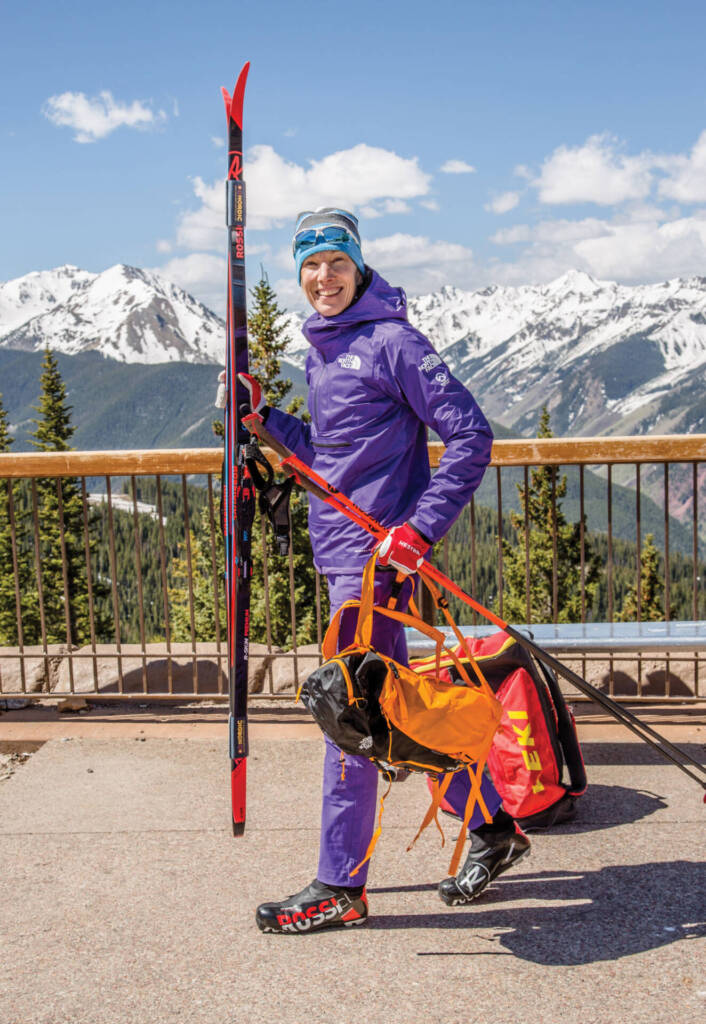
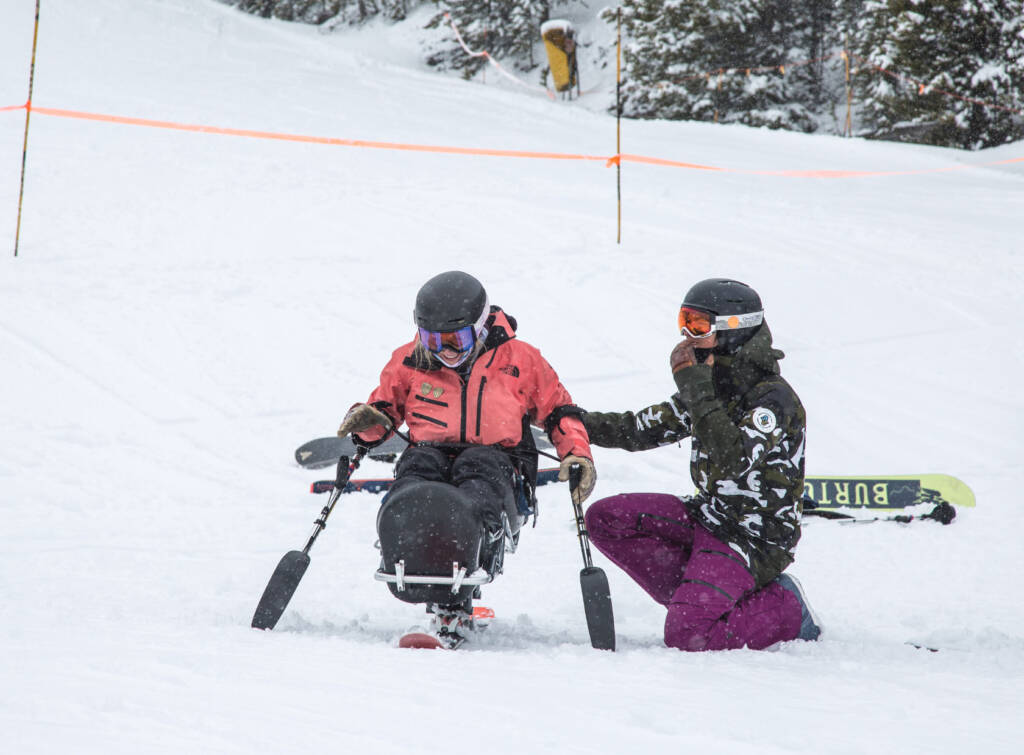
All this is expected to reap many benefits. Among the most important: boosting the presence of female instructors at the nation’s ski hills and resorts, which would build stronger ties for girls and women just starting out or looking to build on their success in snow sports. “As a woman, if you’re learning to ski and all the instructors are male, you may feel you don’t belong,” said Loring.
She says having more female snow sports professionals would no doubt also benefit women aspiring to reach the highest skill and leadership levels. “We have a really low representation of female trainers right now, but we’re trying to increase that percentage so that if you go to a school or resort, you’re just as likely to have a female instructor as a male,” Loring said. “This will keep women feeling like they belong and are part of it all.”
PSIA-AASI is collaborating with U.S. partners as well as international associations such as the Canadian Ski Instructors Alliance in a global effort to inspire and empower more women in the ski industry. “The whole world is in the same boat, so we’re trying to share resources and knowledge and awareness across the country and internationally as well,” Loring said.
For more information on PSIA-AASI’s women in snow sports initiatives, go to: thesnowpros.org/who-we-are/women-in-snowsports.
